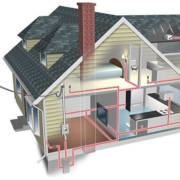Residential Electrical Systems
Residential Electrical Systems
Residential electrical systems are a critical component of modern homes. They provide power for lighting, appliances, and many other household items. It is important to ensure that these systems are properly installed and maintained to keep them safe and reliable.
With the advancement of technology, there have been new developments in residential electrical systems that make them more efficient and less expensive for homeowners. In this article, we will discuss the components of residential electrical systems, the use cases for them, and how they can be improved with new technologies.
To understand a residential electrical system, it is important to understand the component parts. The components are broadly classified into two sections: distribution and service. Distribution involves the wiring within buildings, while service refers to the systems that provide power for appliances in homes. The components typically included in a residential electrical system are listed below. Distribution: circuits, conductors, bus bars, meters and meter readers; fuses; branch circuits; wiring systems like conduit and cable tray; switches; safety devices such as circuit breakers or overcurrent protection devices. Service: transformers, power plants, transmission lines, load centers; customer service.

